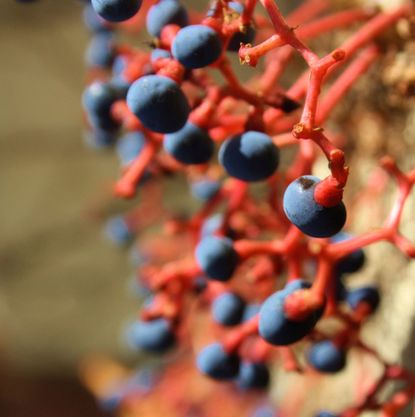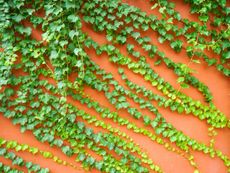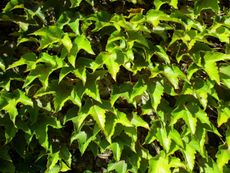Boston Ivy Seed Propagation: How To Grow Boston Ivy From Seed


Boston ivy is a woody, fast-growing vine that grows up trees, walls, rocks, and fences. With nothing upright to climb, the vine scrambles over the ground and is often seen growing along roadsides. Mature Boston ivy displays beautiful, early summer blooms, followed by Boston ivy berries in autumn. Planting Boston ivy seeds you harvest from the berries is a fun way to start a new plant. Read on to learn more.
Harvesting Seeds from Boston Ivy
Pick Boston ivy berries when they are ripe, squishy, and ready to drop naturally from the plant. Some people have good luck planting the fresh seeds directly in cultivated soil in autumn. If you would rather save the seeds and plant them in spring, the following steps will tell you how: Place the berries in a sieve and push the pulp through the sieve. Take your time and press gently so you don't crush the seeds. Rinse the seeds while they are still in the sieve, then transfer them to a bowl of warm water for 24 hours to soften the hard outer coatings. Spread the seeds on a paper towel and allow them to dry until they are completely dry and no longer clump together. Place a handful of moist sand in a plastic bag and tuck the seeds into the sand. Chill the seeds in your refrigerator's vegetable drawer for two months, which replicates the plant's natural cycle. Check occasionally and add a few drops of water if the sand begins to feel dry.
How to Grow Boston Ivy from Seed
Boston ivy seed propagation is easy. To plant Boston ivy seeds, begin by cultivating the soil to a depth of about 6 inches (15 cm.). If your soil is poor, dig in an inch or two (2.5-5 cm.) of compost or well-rotted manure. Rake the soil so the surface is smooth. Plant the seeds no deeper than ½ inch (1 cm.), then water immediately, using a hose with a sprayer attachment. Water as necessary to keep the soil lightly moist until the seeds germinate, which usually takes about a month. Considerations: Since it is a non-native plant that tends to rapidly escape its boundaries, Boston ivy is considered an invasive plant in some states. Boston ivy is beautiful but be careful not to plant it near natural areas; it may escape its boundaries and threaten native plants.
Gardening tips, videos, info and more delivered right to your inbox!
Sign up for the Gardening Know How newsletter today and receive a free download of our most popular eBook "How to Grow Delicious Tomatoes."

A Credentialed Garden Writer, Mary H. Dyer was with Gardening Know How in the very beginning, publishing articles as early as 2007.
-
 Urban Beekeeping Guide: Top Tips For Raising Bees In The City
Urban Beekeeping Guide: Top Tips For Raising Bees In The CityUrban beekeeping can be a rewarding and appreciated pastime, but first be sure it’s legal in your city and learn the ropes of beekeeping.
By Mary Ellen Ellis
-
 2024 Plant Of The Year: Why Experts Say Philodendron Is The “It” Plant Of The Year
2024 Plant Of The Year: Why Experts Say Philodendron Is The “It” Plant Of The YearWe aren’t surprised that philodendron was designated the plant of the year. Versatile, easy-care and lovely, it’s the houseplant of the year 2024!
By Bonnie L. Grant
-
 Boston Ivy Leaf Drop: Reasons For Leaves Falling From Boston Ivy
Boston Ivy Leaf Drop: Reasons For Leaves Falling From Boston IvyAlthough many ivy plants are evergreen, Boston ivy is deciduous. It is perfectly normal to see your Boston ivy losing leaves in autumn. However, Boston ivy leaf drop can also be a sign of disease. Click here to find out more about Boston ivy leaf drop.
By Teo Spengler
-
 Boston Ivy On Walls: Will Boston Ivy Vines Damage Walls
Boston Ivy On Walls: Will Boston Ivy Vines Damage WallsBoston ivy growing up brick surfaces lends a lush, peaceful feeling to the environment but should you plant it on or near walls? This article has tips for growing Boston ivy plants on walls, so consider carefully before planting Boston ivy in your garden.
By Mary H. Dyer
-
 Boston Ivy Cuttings: How To Propagate Boston Ivy
Boston Ivy Cuttings: How To Propagate Boston IvyYou can fill your garden with the Boston ivy by taking cuttings from the vine and rooting them into new plants. So how do you take these cuttings? This article will help with that. Click here to learn more.
By Anne Baley
-
 Boston Ivy Winter Care: Information On Boston Ivy Vines In Winter
Boston Ivy Winter Care: Information On Boston Ivy Vines In WinterBoston ivy plants are commonly grown vines in the landscape. But what about keeping Boston ivy over winter? Learn more about that in this article. Click here to get additional information.
By Jackie Carroll
-
 Controlling Boston Ivy - Learn About Removing Or Pruning Boston Ivy Vine
Controlling Boston Ivy - Learn About Removing Or Pruning Boston Ivy VineLots of gardeners are attracted to the stately beauty of Boston ivy, but controlling this hardy plant can be a challenge both indoors and in the garden. Regular pruning or removal can be found in this article.
By Beverly Forehand
-
 Boston Ivy Care: Tips For Growing And Planting Boston Ivy
Boston Ivy Care: Tips For Growing And Planting Boston IvyBoston ivy plants are attractive, climbing vines that cover outer walls of many older buildings, particularly in Boston. Get information and tips on caring for this plant in the article that follows.
By Becca Badgett